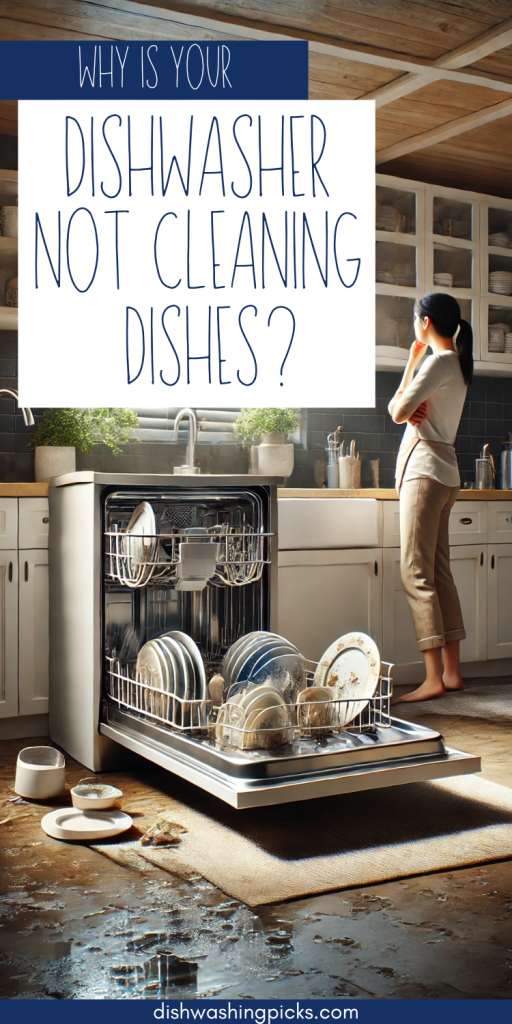
Alright, let’s set the scene: You just ran a full cycle, excited to pull out sparkling clean dishes… but instead, you’re greeted with greasy plates, cloudy glasses, and bits of last night’s dinner still hanging around. What gives?
Before you start side-eyeing your dishwasher like it personally betrayed you, let’s break down why this happens—and more importantly, how to fix it. Because trust me, a dirty dishwasher isn’t just annoying; it’s a sign that something’s not working as it should.
1. Your Dishwasher Itself Is Dirty (Yep, That’s a Thing)
Think about it—your dishwasher’s job is to blast away grease and food bits. But where does all that grime go? Some of it drains away, sure. But over time, gunk can build up in the filter, spray arms, and hidden corners, turning your once-powerful machine into a bacteria-filled mess.
Fix It:
✔ Clean the filter – Take it out (usually at the bottom of your dishwasher), rinse it under hot water, and scrub off any debris.
✔ Wipe down the spray arms – Clogged holes? Use a toothpick to clear them out.
✔ Run a cleaning cycle – Pop in a dishwasher cleaner or a cup of white vinegar and run a hot cycle to dissolve grease and limescale.
Pro Tip: Make it a habit to clean your dishwasher once a month. Trust me, future-you will thank you.
2. You’re Loading It Wrong (Yes, There’s a Right Way)
Let’s be honest—most of us just shove dishes in wherever they fit. But cramming everything in like a chaotic game of Tetris? Not a good idea.
Overloading blocks water and detergent from reaching everything, leaving some dishes spotless while others stay grimy.
Fix It:
✔ Face plates toward the center – The spray arms rotate, so positioning matters!
✔ Bowls and cups go upside down – Otherwise, they’ll collect dirty water.
✔ Don’t block the spray arms – That giant mixing bowl? It’s probably preventing water from reaching the top rack.
Pro Tip: Check your dishwasher manual (yes, that thing collecting dust in your drawer) for the manufacturer’s recommended loading pattern.
3. You’re Using the Wrong Detergent (Or Not Enough)
Not all dishwasher detergents are created equal. Some are better at cutting grease, while others excel at preventing water spots. And if you have hard water (aka, mineral-heavy water), regular detergent might not be enough.
Fix It:
✔ Try a high-quality detergent – Brands like Finish Quantum, Cascade Platinum, or Ecover (for an eco-friendly option) can make a huge difference.
✔ Use a rinse aid – Especially if you have hard water. It helps prevent cloudy glasses and improves drying.
✔ Check the detergent amount – More isn’t always better. Too much can cause residue, and too little won’t clean properly.
Pro Tip: If your dishwasher has a detergent dispenser, make sure it’s not clogged—old detergent buildup can stop it from opening fully.
4. Your Water Temperature Is Too Low
Hot water is essential for breaking down grease and activating detergent properly. If your dishwasher isn’t getting hot enough (at least 120°F/49°C), your dishes won’t get truly clean.
Fix It:
✔ Run the hot water before starting the dishwasher – Turn on your kitchen faucet and let it run until it’s steaming hot.
✔ Check your water heater – If it’s set below 120°F, crank it up a bit.
✔ Use the ‘High-Temp Wash’ setting – Most dishwashers have this option for extra heat.
Pro Tip: If your dishwasher is taking forever to heat up, you might have sediment buildup in your water heater slowing things down. Flushing it once a year helps!
5. The Spray Arms Aren’t Spinning Properly
Spray arms are the unsung heroes of your dishwasher, blasting water in all directions. But if they’re clogged with food debris or blocked by dishes, they can’t do their job.
Fix It:
✔ Manually spin the spray arms – If they don’t move freely, something’s in the way.
✔ Check for clogs – Use a toothpick or small brush to clear out any gunk in the spray holes.
✔ Make sure nothing is blocking them – Tall dishes or oversized pots can prevent them from spinning.
Pro Tip: If your dishwasher has a top spray arm, make sure it’s not loose or disconnected—it happens more often than you’d think!
6. Your Dishwasher Needs a Repair
Tried everything, and your dishwasher still isn’t cleaning properly? You could be dealing with a bigger issue, like:
- A failing water pump (low pressure = weak cleaning power)
- A worn-out heating element (not heating water properly)
- A broken detergent dispenser (not releasing soap at the right time)
Fix It:
✔ Listen for strange noises – A weak or quiet spray usually means low pressure.
✔ Check for leaks or standing water – A clogged drain could be affecting performance.
✔ Call a professional – If you’ve ruled out everything else, it might be time for a repair.
Pro Tip: If your dishwasher is 10+ years old, it might be more cost-effective to replace it rather than repair it.
Final Takeaway: Keep Your Dishwasher Happy, and It’ll Keep Your Dishes Clean!
A dishwasher that isn’t cleaning properly is frustrating—but most of the time, it’s an easy fix. Start with the basics: clean the machine, load it correctly, check your detergent, and make sure your water is hot enough.
Action Step: Try these fixes one by one and see what works for you. Your sparkling clean dishes will thank you!
